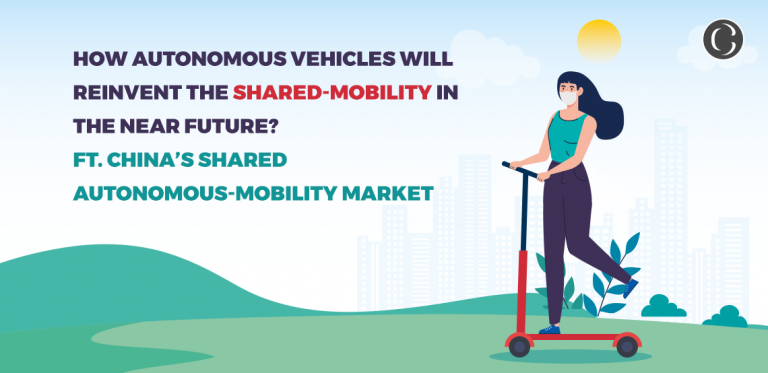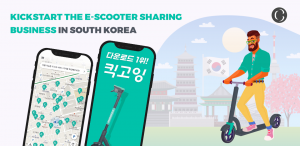How autonomous vehicles will reinvent the shared-mobility in the near future? Ft. China’s shared autonomous-mobility market

The automated vehicle market is heating up in China. Last week, the ride-hailing giant in China, Didi Chuxing, raised more than $500M funding for its autonomous driving subsidiary. The funding round led by the Japanese telecom giant, and startup benefactor Softbank under its Vision Fund 2, Softbank has also backed Uber in the past.
This latest capital infusion will be used in the R&D, testing, and deployment of its autonomous driving technology and services in China as well as abroad. Also, the company is planning to mass production of autonomous vehicles partnering with the auto industry.
DiDi started to develop and test autonomous driving vehicles in 2016, and in August 2019, DiDi upgraded its autonomous driving unit into an independent company. This is the first time DiDi’s autonomous driving business brought external funding since its establishment and makes it the only fundraising round in China’s autonomous driving sector.
DiDi’s leadership in on-the-ground operation hails from Alibaba’s legendary B2B sales team, aka Alibaba Iron Army. Didi has also turned to traditional carmakers for collaboration known as the D-Alliance, which has more than 31 partners and applied the technology into vehicles of all auto-giant companies, including Lincoln, Volvo, BYD, Nissan, etc.
Didi has secured open-road testing licenses in three major cities in China including Shanghai, Beijing, and Suzhou, as well as in California, USA. The company is the first to get licenses in Shanghai to pilot manned autonomous mobility services. It’s accumulated 300,000 kilometers of road tests combined in China and the USA as of August 2019.
The autonomous driving business of DiDi includes DiDi’s one-stop solutions platform – Xiaoju Automobile Solutions, DiDi Finance – next-generation integrated mobility solutions, and of course fleet maintenance service, smart charging networks, and insurance programs for fleets.
And now that investments have increased in the company, DiDi Chuxing aims to launch autonomous fleet operations in selected locations in China with Vehicle-to-Everything (V2X) systems, and related Artificial Intelligence capabilities, as China seeks to build a comprehensive digital infrastructure network based on Ai, 5G, and IoT technologies.
SoftBank launched its Vision Fund 2 in July 2019 with the plan to have it become a $108B fund that would complement its $100B Vision 1 Fund. However, as per the Wall Street Journal reports, after several big investments failed from the first vision fund, contributions to the second fund have not yet met the proposed target.
Meanwhile, autonomous driving technology across the globe continues to attract investors. Waymo, the self-driving technology being developed under the Alphabet umbrella, raised two successive fundings of $2.5B back in March 2020, and $750M in May 2020. China’s Pony.ai also raised funding of $462M in February 2020.
How China will fuel the global self-driving shared-mobility revolution:
Autonomous vehicles have massively dominated the mobility industry since December 2018, when Google’s Waymo announced the launch of a commercial autonomous taxi service in the suburbs of Phoenix, Arizona.
AVs are now taking off in China, the payoff is expected to be in the trillions of dollars. From automated taxis to automated cargo trucks, AVs will change the nature of on-road driving and, in the process, revolutionized the shared mobility industry.
According to McKinsey’s research, passenger vehicles used for mobility services such as Robo-taxis will see a peak adoption rate of 62%, followed by private premium vehicles with a rate of 51% and MAAS with a rate of 38%. Autonomous vehicles will likely increase a substantial share of the MAAS in the mobility market and suggest dramatic changes ahead for vehicle sales volumes, business models in the shared mobility industry.
In 2019, many countries across the world have announced future mobility visions, especially micro-mobility. McKinsey & Co. has estimated the shared autonomous mobility market across China, the EU, and the USA to reach up to $300-500B in 2030.

(Source: Mckinsey & co.)
Regarding AVs, two ownership models are being considered for the future of the mobility system. These are AVs as a public service and AVs for private transportation. In addition to these ownership models comes the possibility of sharing mobility.
With this fast-paced urbanization, transportation demand has seen swift growth in recent years. But this increased demand has come with a set of challenges such as limited oil supplies, growing levels of pollution, and traffic congestion.
Fully Automated vehicles are expected to make the travel experience safe, sustainable, and more comfortable. The deployment of AVs will go hand in hand with the increasing need for shared-mobility services. This increasing interest can also be observed after many large mobility giants including Tesla, Ford, Uber, Lyft, etc., have already declared their plans for deploying new autonomous mobility services. In this way, AVs in a ride-sharing system represents a promising opportunity in the near future.

(Source: ictech)
An instrumental component of China’s development of smart cities is a comprehensive technology – Vehicle-to-Everything (V2X). It aims to make AVs safe, smart, and more convenient through redundancy.
Baidu Apollo ha recently released the ACE (Autonomous driving, Connected road, Efficient mobility) Transportation Engine. ACE is nothing but a full-stack solution that helps cities integrates AI with infrastructure, equipment, services, and industry governance and makes it easy to build intelligent transportation systems.
More than 10 cities in China have already implemented the ACE Transportation Engine to create a dynamic intelligent vehicle innovation ecosystem and a modern transportation system.

(Source: MIT Tech Review)
The covid-19 pandemic has awakened a need for AVs in china to improve safety in transportation and deliver supplies, that leading to new breakthroughs and expansion which will help in minimizing the impact of the pandemic and develop a new infrastructure for better future outcomes.
The other countries around the world take inspiration from the developments in China, as it can be used to drive better outcomes to end the covid-19 pandemic as quickly as possible.
Contact us to learn more about Autonomous Shard-Mobility and discuss in detail the scope of AI and IoT for your personalized app. You can even ask Coruscate for a free demo.









